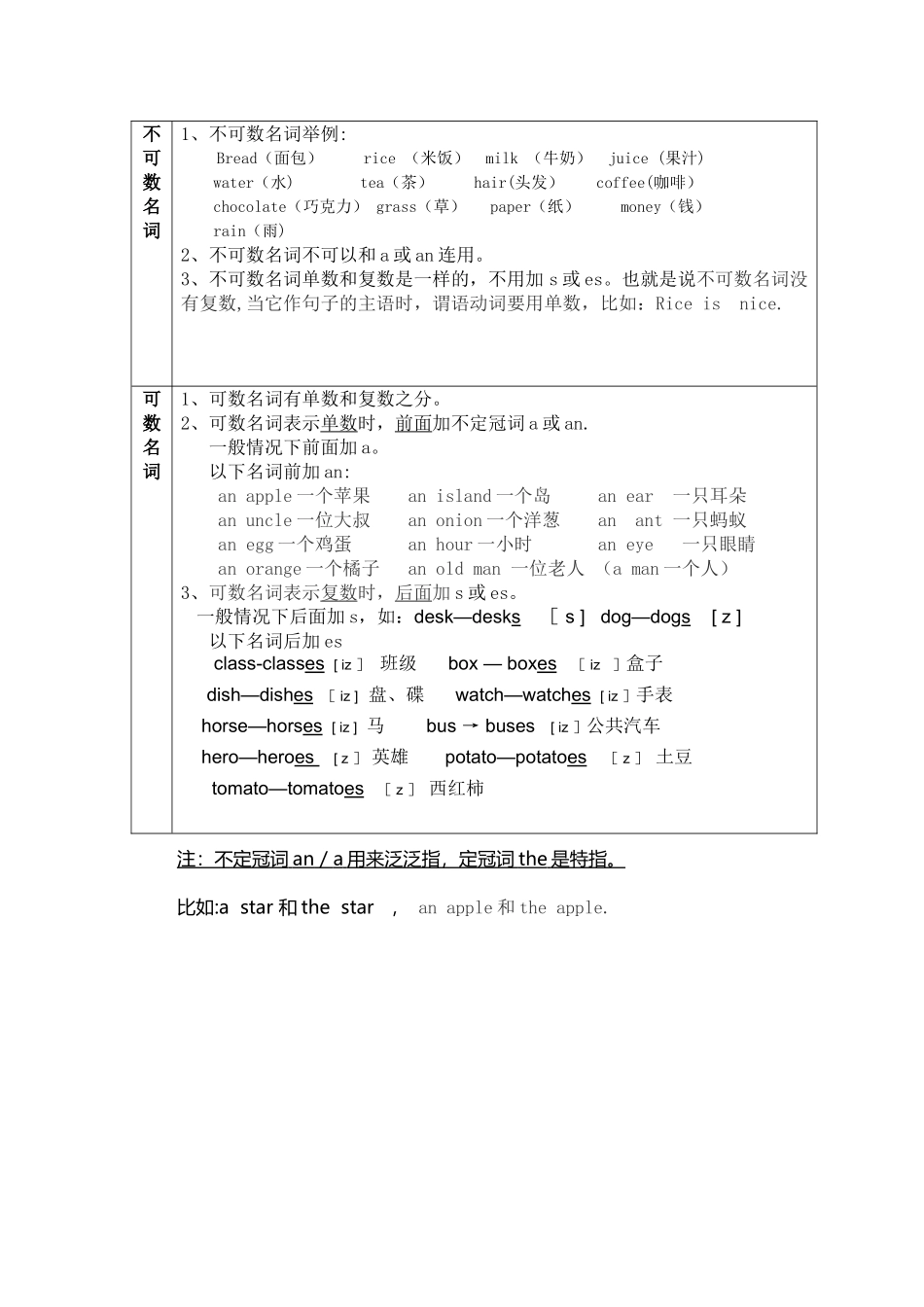重 要 知 识一、英语中人称代词主格所有格宾格一览表二、be 动词“是”的用法: am、is 和 are 的区别:我用 am, 你用 are ;单数名词用 is, 复数名词都用 are. (他她它用 is,我们你们和他们也都用 are)例子:The apple is very big。 (单数) The apples are very big。 (复数)三、可数名词与不可数名词 主格(作主语)所有格(后接名词)宾格(动词或介词之后)人称代词单数我I (am)my(我的)me你you (are)your(你的)you他he (is)his(他的)him她she (is)her(她的)her它It (is)its(它的)it复数我们we (are)our(我们的)us你们you (are)your(你们的)you他们they (are)Their(他、她、它们的)them她们它们不可数名词1、不可数名词举例: Bread(面包) rice (米饭) milk (牛奶) juice (果汁)water(水) tea(茶) hair(头发) coffee(咖啡) chocolate(巧克力) grass(草) paper(纸) money(钱) rain(雨)2、不可数名词不可以和 a 或 an 连用。3、不可数名词单数和复数是一样的,不用加 s 或 es。也就是说不可数名词没有复数,当它作句子的主语时,谓语动词要用单数,比如:Rice is nice.可数名词1、可数名词有单数和复数之分。2、可数名词表示单数时,前面加不定冠词 a 或 an. 一般情况下前面加 a。 以下名词前加 an:an apple 一个苹果 an island 一个岛 an ear 一只耳朵 an uncle 一位大叔 an onion 一个洋葱 an ant 一只蚂蚁 an egg 一个鸡蛋 an hour 一小时 an eye 一只眼睛 an orange 一个橘子 an old man 一位老人 (a man 一个人) 3、可数名词表示复数时,后面加 s 或 es。 一般情况下后面加 s,如:desk—desks [ s ] dog—dogs [ z ] 以下名词后加 es class-classes [ iz ] 班级 box — boxes [ iz ]盒子 dish—dishes [ iz ] 盘、碟 watch—watches [ iz ]手表 horse—horses [ iz ] 马 bus → buses [ iz ]公共汽车 hero—heroes [ z ] 英雄 potato—potatoes [ z ] 土豆 tomato—tomatoes [ z ] 西红柿注:不定冠词 an / a 用来泛泛指,定冠词 the 是特指。 比如:a star 和 the star , an apple 和 the apple.

